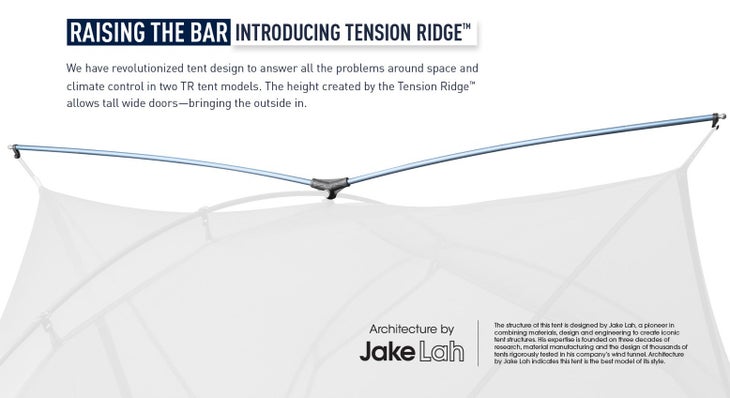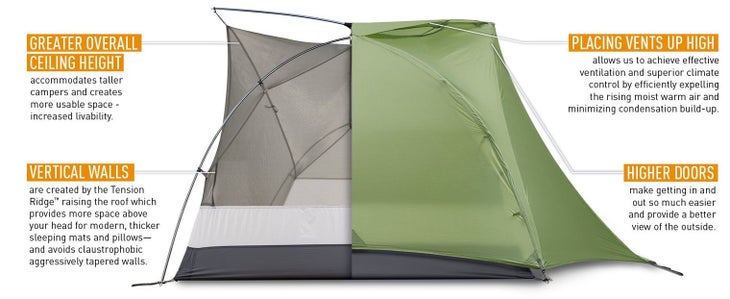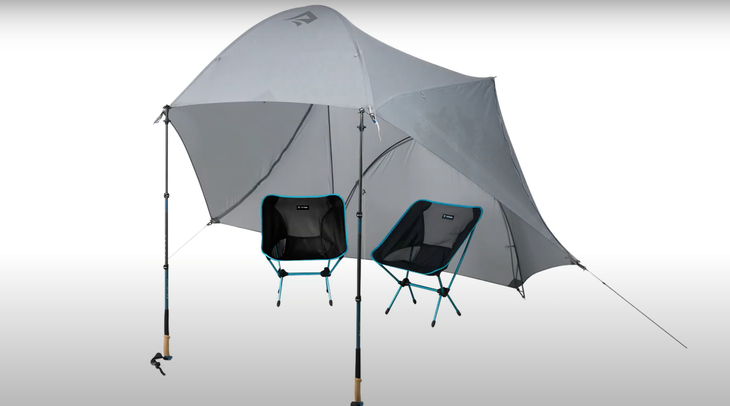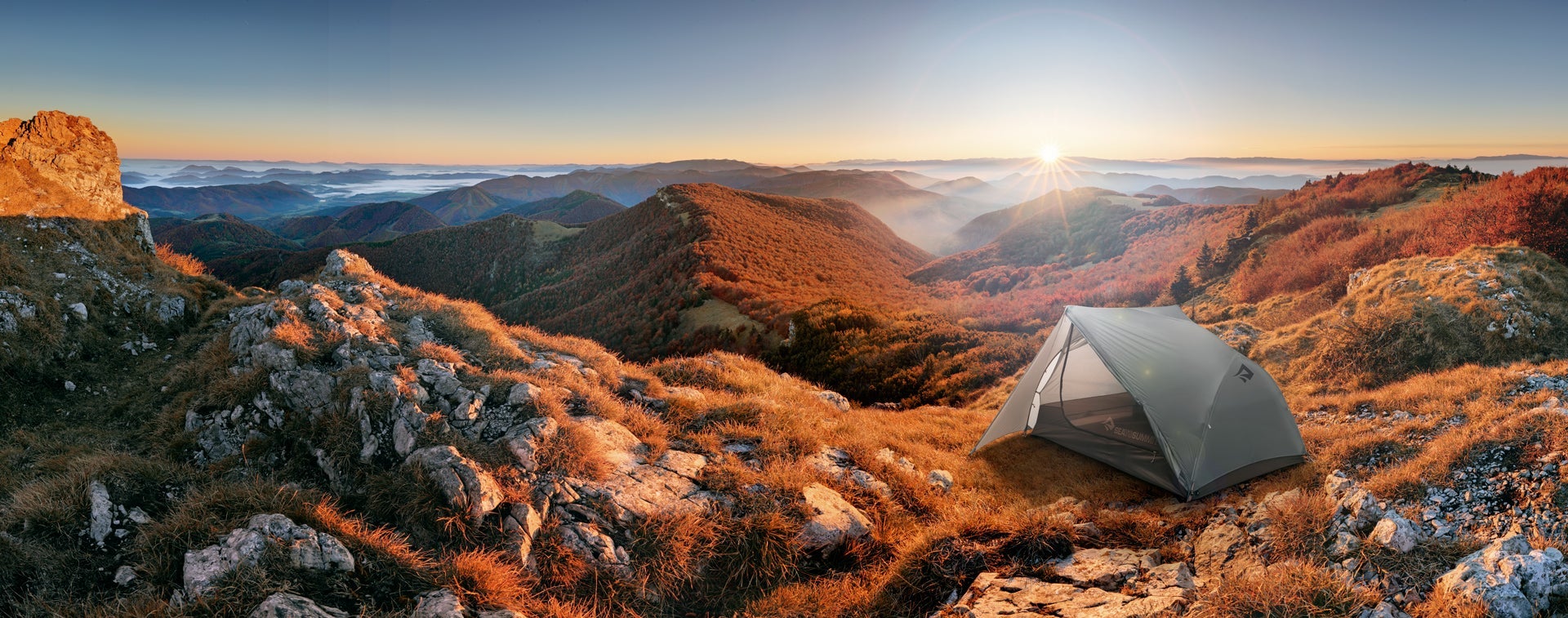Sea to Summit dropped some big news today about its Spring ’21 lineup. After more than three years of research and development, the brand will make its first play in the lightweight tent market with two new backpacking models, the┬áAlto and the Telos, which customers can get their hands on early in the new year.
Developed in collaboration with industry-leading tent pole manufacturer DAC, the new offerings are designed around a fresh technology that Sea to Summit is calling the Tension Ridge, a pole construction that creates more room inside the tent, taller doors, and greater ventilation.
“This is a huge project for us,” Josh Simpson, North American general manager at Sea to Summit, told ║┌┴¤│ď╣¤═° Business Journal. “It’s one of the most significant investments the brand has ever made in terms of R&D and developing a new category.”
Roland Tyson, Sea to Summit’s founder, said in a┬ápromotional video shot this month┬áthat the new tents are the most complicated product Sea to Summit has ever made.
“We did a lot of work on looking at what people don’t like about tents,” said Tyson. “We went, ‘OK, our hit list is to go through and make sure we solve all of these problems.’ These are very different from other tents when you use themÔÇöfrom space to ventilation to entrances to visibility.”
Tension Ridge Technology
According to Simpson, the project began in earnest several years ago when Tyson met DAC founder and legendary designer Jake Lah. The two began talking about the biggest design flaws that vex backpacking tents across various brands; one thing led to another, and an idea was born.
“They found a lot of common ground in the way that they viewed tent space and what could be done differently,” said Simpson. “These tents represent a very deep collaboration with DAC, deeper than anything we’ve done with another company. The development of the main architectural feature of these tents was a real partnership between Roland and Jake.”
That architectural feature is Sea to Summit’s new Tension Ridge technology, a system that allows the tent’s brow pole to angle upward at its ends, rather than down. That simple tweak opens up the tent’s interior space significantly while allowing room for vents to be placed up highÔÇöan exit point for rising warm air that leads to unwanted condensation.
ÔÇťBy inverting the angle of the brow pole, we achieve best-in-class interior space and ventilation, without adding weight or bulk to the tent,ÔÇŁ said Lah.

Simpson said, “The Tension Ridge creates a tremendous amount more space inside the tent for a similar footprint to other tents on the market. And it allows us to do some pretty tricky things with ventilation. We looked at all the things within tent design that we wanted to address, and we really focused in on three core areas to hone in on: space, climate, and versatility. This tension ridge system is core to almost everything that we’re addressing within the first two areas of space and climate.”
Sea to Summit has collected testing data that shows the tents are “demonstrably better in terms of managing humidity and condensation than anything else on the market,” according to Simpson. The company will release that data in coming weeks.
In terms of wind stability, Simpson says the design offers a unique advantage because of the upper vent.
“Obviously you wouldnÔÇÖt orient this toward the wind when you’re setting it up, but if the wind changes direction in the middle of the night and you’ve got a gust coming straight into the upper vent, what happens is that vent acts as a counterbalance to the headwall.”
While most of the tent will be pushed downward by strong wind, he says, the area under the upper vent will be lifted up, acting as a foil and creating stability. When the wind hits the side of the tent, the construction of the Tension Ridge allows it to pass straight through.

‘Hangout Mode’ and Other Goodies
Beyond solving problems of space and climate, the two new models also take aim at versatility issues identified during the R&D process, with lots of attention paid to small details inside and out.
The rain fly in both models┬ácan be adjusted to three positions: “star friendly,” partially open, or closed. The┬átent and fly stuff sacks clip into place as storage pockets inside the tent. A┬ápole case doubles as a light barÔÇöa feature from which to hang your headlamp for overhead illumination.
But perhaps the coolest versatility innovation is something called Hangout Mode, available on the Telos.
“This patent-pending feature allows you to essentially remove the inner and tilt the tent back, turning it into a group shelter for cooking, shade, and weather protection,” said Simpson.

“Because of this communal feature that the Hangout Mode gives you, we see the Telos as a crossover between the backpacking space and family or group camping,” Simpson said. “It fills a middle ground that a lot of traditional backpacking tents don’t address. You can bring four people and a dog under there and cook, then drop it down at night and use it like a normal tent.”
Where to Get Them
The Alto and Telos will be available at select retailers and on Sea to Summit’s website this spring. REI, Moosejaw, Backcountry.com, and a small group of independent speciality shops will carry them in 2021, with wider distribution opening up in 2022.
Tech Specs: Alto TR1 & 2, Starting at $399
- People: 1 or 2
- Season: 3 or 3+
- Doors: 1 (1p) or 2 (2p)
- Vestibules: 1 (1p) or 2 (2p)
- Tension RidgeÔÇöallowing more internal living space, higher doors, and best-in-class ventilation
- ApexÔÇöallowing cross-ventilation and climate adaptability
- LightBar and FairShare SystemÔÇömodular stuff sacks for tent distribution and organization
- Minimal trail weight (fly, inner, and poles): 2.06 lbs. (1p); 2.6 lbs. (2p)
- Packed weight (all of the above, plus pegs, stuff sacks, and guy lines): 2.41 lbs. (1p); 2.98 lbs. (2p)
- Floor area: 19.53 square feet (1p); 27.54 square feet (2p)
- Vestibule area: 7.5 square feet (1p); 18.3 square feet (2p)
- Ridge height: 3’3ÔÇŁ
- Door height: 3’7ÔÇŁ
- Fly material: 15D nylon
- Fly waterhead: 1,200mm
- Floor material: 15D-20D nylon
- Floor waterhead: 1,200mm-2,500mm
- Color: Grey (sil-PeU)
Tech Specs: Telos TR2 & 3, Starting at $499
- People: 2 or 3
- Season: 3 or 3+
- Doors: 2
- Vestibules: 2
- Freestanding and Hangout Mode adaptability with the Telos rainfly
- Tension RidgeÔÇöallowing more internal living space, higher doors, and best-in-class ventilation
- Apex and Baseline VentÔÇöallowing cross-ventilation and climate adaptability
- LightBar and FairShare SystemÔÇömodular stuff sacks for tent distribution and organization
- Minimal trail weight (fly, inner, and poles): 3.26 lbs. (2p); 4.32 lbs. (3p)
- Packed weight (all of the above, plus pegs, stuff sacks, and guy lines): 3.64 lbs. (2p); 4.75 lbs. (3p)
- Floor area: 28.2 square feet (2p); 39.74 square feet (3p)
- Vestibule area: 19.3 square feet (2p); 21.5 square feet (3p)
- Ridge height: 3’4ÔÇŁ (2p); 3’5ÔÇŁ (3p)
- Door height: 3′ 7ÔÇŁ (2p); 3’10ÔÇŁ (3p)
- Fly material: 15D nylon
- Fly waterhead: 1,200mm to 1,500mm
- Floor material: 20D nylon
- Floor waterhead: 2,500mm to 8,000mm
- Color: Grey (sil-PeU)


